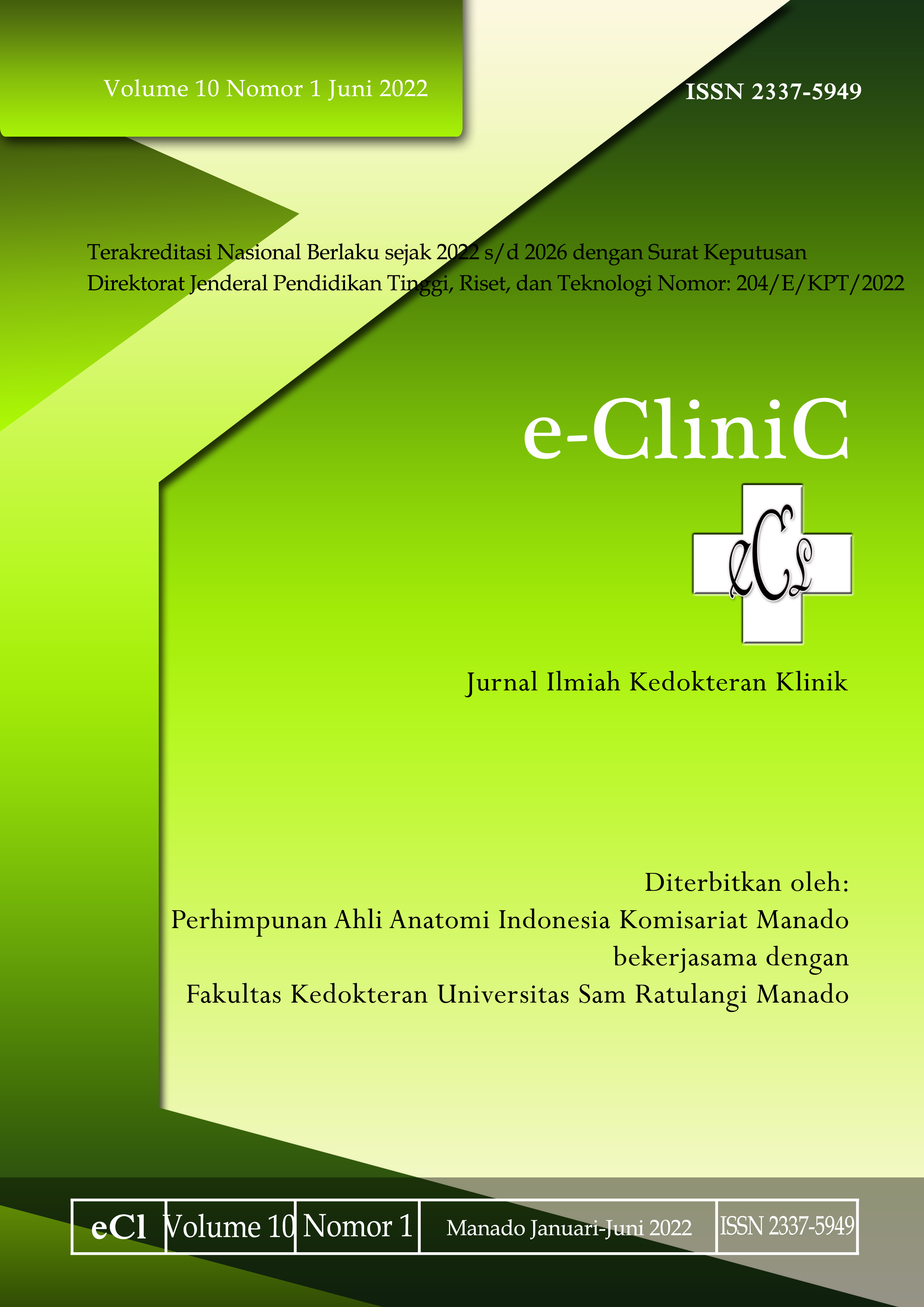Bullous Pemphigoid in a Women with Type 2 Diabetes Mellitus: A Case Report
DOI:
https://doi.org/10.35790/ecl.v10i1.39085Abstract
Abstract: Bullous Pemphigoid (BP) is an autoimmune disease with subepidermal blisters that are generally minimally itchy to non-itchy. It usually occurs in old age, but sometimes in children and young adults. Clinical presentation shows large, tense-walled blisters on normal or erythematous skin, mostly at the folds, lower abdomen, thighs, but they can appear anywhere. Therapy of BP is aimed to treat skin and mucous lesions as soon as possible and to reduce itchiness, therefore, the quality of life will be improved. The first line therapy is oral and topical corticosteroids, with an initial dose of prednisone 0,75-1mg/kg/day or less. Prednisone tapering should be carried out in accordance with the clinical response and side effects. We reported a 47-year-old female, complained blisters on chest, abdomen, both arms and legs simultaneously. History of uncontrolled diabetes mellitus was present. Skin biopsy revealed subepidermal bullae associated with infiltraton of inflammatory cells, and Nikolsky sign and Asboe-Hansen sign showed negative results. Based on the results, the patient was diagnosed as BP. Prednisone was given 40mg/day with weekly tapering. After two weeks of prednison therapy, the lesions showed great improvement. After six weeks of therapy, the blister formation stopped, and a gradual tapering-off of the corticosteroid dose was recommended according to clinical responses until three months of therapy. The blisters reduced without any side effects. In this case, prednisone showed good result, and complete resolution occurred after six weeks of therapy.
Keyword: bullous pemphigoid; diabetes mellitus; prednisone
Â
Abstrak: Pemfigoid Bulosa (PB) merupakan penyakit autoimun dengan lepuh subepidermal yang umumnya gatal minimal hingga tidak gatal, lebih sering terjadi pada usia tua, kadang pada anak dan dewasa. Gambaran klinis berupa lepuh besar, dinding tegang di atas kulit normal atau dasar eritematosa. Biasanya ditemukan di lipatan, perut, paha, tetapi bisa muncul di mana saja. Terapi PB bertujuan untuk menyembuhkan lesi kulit dan mukosa dengan cepat dan mengurangi rasa gatal untuk meningkatkan kualitas hidup. Penggunaan kortikosteroid oral dan topikal merupakan lini pertama, dengan dosis awal prednison 0,75-1mg/kg/hari atau kurang. Tapering prednison harus dilakukan sesuai dengan respon klinis dan efek samping. Kami melaporkan kasus seorang wanita, 47 tahun, dengan keluhan lepuh-lepuh di dada, perut, kedua lengan dan kaki muncul bersamaan dengan riwayat diabetes melitus tidak terkontrol. Biopsi kulit dilakukan dengan hasil bula subepidermal disertai infiltrasi sel inflamasi. Nikolsky sign dan Asboe-Hansen sign memberikan hasil negatif. Pasien didiagnosis sebagai PB dan diberikan prednison 40 mg per hari dengan tapering per minggu. Setelah dua minggu terapi prednison, lesi menunjukkan banyak perbaikan. Setelah enam minggu terapi, pembentukan lepuh terhenti, dan dilakukan pengurangan dosis prednison secara bertahap sesuai respons klinis sampai tiga bulan terapi. Lepuh berkurang tanpa efek samping. Pada kasus ini, prednison memberikan hasil yang memuaskan, dan resolusi lengkap tercapai setelah enam minggu terapi.
Kata kunci: pemfigoid bulosa; diabetes mellitus; prednison
Downloads
Additional Files
Published
How to Cite
Issue
Section
License
COPYRIGHT
Authors who publish with this journal agree to the following terms:
Authors hold their copyright and grant this journal the privilege of first publication, with the work simultaneously licensed under a Creative Commons Attribution License that permits others to impart the work with an acknowledgment of the work's origin and initial publication by this journal.
Authors can enter into separate or additional contractual arrangements for the non-exclusive distribution of the journal's published version of the work (for example, post it to an institutional repository or publish it in a book), with an acknowledgment of its underlying publication in this journal.
Authors are permitted and encouraged to post their work online (for example, in institutional repositories or on their website) as it can lead to productive exchanges, as well as earlier and greater citation of the published work (See The Effect of Open Access).







